The Central Epidemic Command Center (CECC) yesterday announced that the policy of using a positive COVID-19 rapid antigen test result for diagnosis would be expanded to the public starting today, and it reminded the public of the five steps when taking a positive test result to a doctor for assessment.
Minister of Health and Welfare Chen Shih-chung (陳時中), who heads the center, said the policy would be officially expanded to everybody, starting today, and the case definition for COVID-19 had been revised accordingly.
Centers for Disease Control (CDC) Deputy Director-General Chuang Jen-hsiang (莊人祥), who is the CECC spokesman, said the previous case definition was being tested positive in one of two testing methods — a polymerase chain reaction (PCR) test or a rapid antigen test assessed by a doctor — but the eligibility for diagnosis based on the rapid test result was limited to people in home quarantine, home isolation, self-disease prevention, people aged 65 years or older, and residents of indigenous areas and outlying islands.
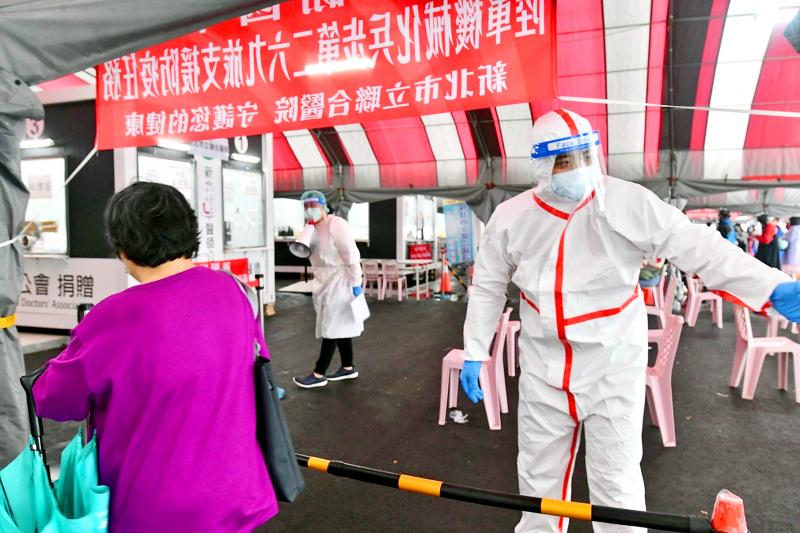
Photo courtesy of the New Taipei City Department of Health via CNA
Starting today, the definition has been revised to include people who test positive with a rapid antigen test without regard to age or ethnicity, who can be diagnosed as a confirmed case after a doctor confirms the test result, or if the positive rapid test result was performed by a health worker, he said.
The positive test result could be assessed by a doctor through a telemedicine appointment or taken to a doctor at a community testing station or healthcare facility, he said, adding that people who tested positive should remember the following five steps:
They should write their name and testing date on the rapid test cassette with the positive result, put their National Health Insurance (NHI) card next to the cassette and take a photograph, then put the cassette in a bag and take it to a healthcare facility or testing station if they wish to see a doctor in person, he said.
They should wear a mask throughout the visit and are prohibited from taking public transport, but can drive, walk or have a family member drive them to the hospital, Chuang said, adding that those who book a telemedicine appointment should follow the doctor’s instructions.
Chuang said the criteria for getting a PCR test has also been updated in response to the new policy, including when a health provider has doubts about the result of a rapid test performed by them, and when a patient and doctor cannot agree on the result of a rapid test performed by the patient.
They also include when a confirmed case diagnosed based on a rapid test needs to be hospitalized during at-home care; when a patient tests negative with a rapid test, but the doctor suspects the patient to be infected; and when a frontline health worker tests positive with a rapid test and needs to confirm the result with a PCR test within 24 hours, he said.
As the new testing policy has just been implemented, testing stations will continue to offer PCR tests for people who have tested positive with a rapid test, he added.
Deputy Minister of Health and Welfare Shih Chung-liang (石崇良) said the new policy was not immediately adopted when the local outbreak started last month, as about 15 percent of people who tested positive with a rapid test later tested negative in a PCR test at that time.
Placing false-positive cases in isolation or administering unnecessary treatment would have breached the principles of law and ethics, Shih said.
Consistency between rapid test and PCR test results has greatly increased since then to as high as 97 percent in New Taipei City, 93 percent in Taipei and 95 percent in Taichung, meaning the risk of false-negative cases is much lower, he said.
Moreover, after consulting with specialists and local governments, the case definition for COVID-19 has been revised to solve a legal issue, he said, adding that the model of diagnosis through shared decisionmaking between the patient and a doctor would solve the previous ethical issue.
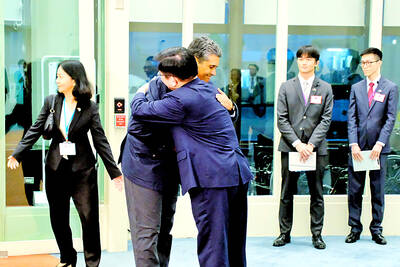
Palauan President Surangel Whipps Jr arrived in Taiwan last night to kick off his first visit to the country since beginning his second term earlier this year. After arriving at Taoyuan International Airport at around 6:30 pm, Whipps and his delegation were welcomed by Minister of Foreign Affairs Lin Chia-lung (林佳龍). Speaking to gathered media, the Palauan leader said he was excited and honored to be back in Taiwan on his first state visit to Taiwan since he was sworn in this January. Among those traveling with Whipps is Minister of State Gustav N. Aitaro, Public Infrastructure
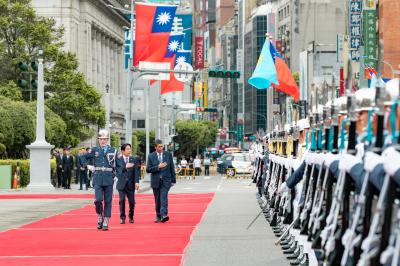
President William Lai (賴清德) yesterday thanked Palau for its continued support of Taiwan's international participation, as Taipei was once again excluded from the World Health Assembly (WHA) currently taking place in Switzerland. "Palau has never stopped voicing support for Taiwan" in the UN General Assembly, the WHO and other UN-affiliated agencies, Lai said during a bilateral meeting with visiting Palau President Surangel Whipps Jr. "We have been profoundly touched by these endorsements," Lai said, praising the Pacific island nation's firm support as "courageous." Lai's remarks came as Taiwan was excluded for the ninth consecutive year from the WHA, which is being held in
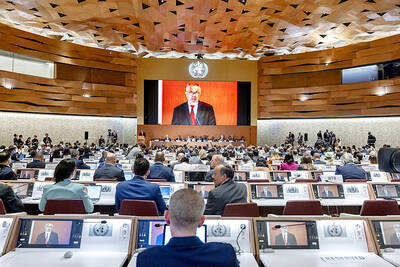
RESOLUTIONS DEBATE: Taiwan’s allies said that UN and WHA resolutions cited by China and other nations ‘do not determine Taiwan’s participation in WHO activities’ A proposal to invite Taiwan to this year’s World Health Assembly (WHA) was rejected on Monday, resulting in Taipei’s absence from the annual meeting for a ninth consecutive year, although partners spoke up for Taiwan’s participation at the first day of the meeting. The first agenda item after the opening was a “two-on-two debate” on a proposal to invite Taiwan to participate at the WHA as an observer. Similar to previous years, two countries made statements in favor of the proposal, while two others expressed their opposition. Philippine Secretary of Health Teodoro Herbosa, president of the 78th WHA, accepted the WHA General Committee’s
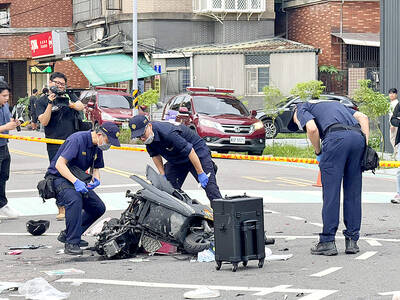
At least three people died and more than a dozen were injured yesterday afternoon when a vehicle struck a group of pedestrians in New Taipei City’s Sansia District (三峽). The incident happened at about 4pm when a car rammed into pedestrians at an intersection near Bei Da Elementary School. Witnesses said the sedan, being driven at a high speed, ran a red light, knocking scooters out of the way and hitting students crossing the road before careening into a median near the intersection of Guocheng and Guoguang streets. The incident resulted in three deaths and 13 injuries, including the driver, a 78-year-old man